Help Please! I’m Planning to Bite The Bullet…
After brushing on 4 coats of "Desert Pink" paint on my Jaguar and STILL not getting the coverage I want, and watching a recent video on hairspray chipping to get a nice winter white wash effect, I've decided I'm going to have to secure a compressor and learn the fine art of airbrushing.
I have a Paasche double action airbrush I bought around 30 years ago. What I'm after now is a compressor that is a good balance between quality and cost - or perhaps another way to say it is one I can learn with for a few years, even if it's not the best, before I upgrade.
I see lots of relatively inexpensive stuff on ebay, but don't know if I should go with tank or tankless, etc., nor do I know what I should look for.
Any suggestions and advice would be welcome!
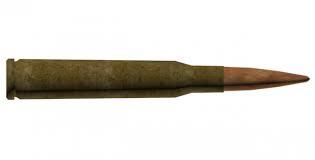
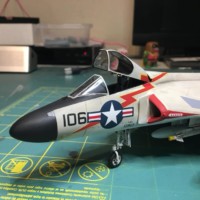
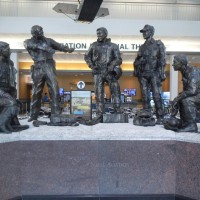
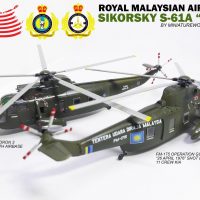
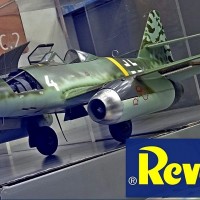
Greg,
Congratulations on your decision - you won't regret it once you get the hang of airbrushing. As to your questions, I'm not at all an expert on compressors, but here's what I've learnt over the years - and my personal opinions.
Brands: I would stay away from specifically branded products "for modellers", like Revell etc. Not that they are bad products, but they are esentially standard copressors with a logo and a mark-up stuck on them. A manufacturer I can recommend is Sparmax, never had a problem with them.
Tank vs. tankless: A compressor with a tank works by filling up its tank to a certain pressure and then stopping, whereas a tankless compressor has to run constantly to provide air pressure. This means you have to deal with constant noise - and more importantly, depending on its cooling system and room temperature, you will have to stop sooner or later and wait for the compressor to cool down. In short: a tankless compressor might interrupt your workflow and make you wait.
Cooling system: Smaller compressors are usually air cooled, whereas the more sophisticated ones are oil cooled. Again, depending on what you want to do you might find an air cooled compressor interrupts your workflow because it will heat up and shut down automatically after prolonged use.
Humidity: Depending on where you live, you might have to deal with a humid climate. In that case, a water trap on your compressor is a really good idea. This will separate water from the airflow that goes into your airbrush - water that will otherwise mess with your paint and your results.
My first compressor was the cheapest I could find. Air cooled, no tank, no water trap, nothing. Used it for about five years, and hated it. And in the end the piston seized, giving me an excuse to throw it away and get a proper compressor 😀
What is that? A .223 round? Looks like it's seen better days! 🙁
Hi Greg, A collegue of mine (who I'm not particularly keen on) was showing off at work with his very expensive Hugo Boss watch and I was forced to explain to him that Hugo Boss don't make watches ,they make clothing and what he had bought was a mass produced watch with a Hugo Boss logo and a large mark up ! so I agree with Boris buy a quality brand ,I have an Iwata and I have had no problems with it.
My only other advice is not to buy a cheap one to begin with and upgrade later, that's a false economy ,the difference in cost between a basic entry level compressor and a good quality one isn't that great ,buy the best you can stretch too now and it will last you for years.
Good luck with it however you choose to go pal.N.
Finally, Greg! Waiting to see you first airbrush painted model!
I'm totally agree with Boris -- stay away from branded products for modelers, not because of the quality, but because of price -- in many cases you'll find a cheaper replacement in a shop for artists, for example.
I would suggest to buy compressor with a tank, it's more convenient while the price does not differ that much. I have a compressor from China, its price was about 130$ if I remember. After 3 or 4 years after purchasing it, I had to repair it by myself (there was an air leak, so I've fixed all the joining).
My first airbrush was also a cheap Chinese one, and all I can say -- don't do this. Buy a good airbrush from Iwata, H&S, Paasche and enjoy. Mostly all the time I use airbrush with 0.2 mm nozzle. Also, I would suggest to buy a quick release coupling (could be with an air flow regulator) -- it's supper cheap but will save you a lot of time.
Greg, once you get the hang of an airbrush you'll' probably experience some disappointment on why you didn't do It sooner. Its the only way to go.
I've got an old Badger 200 single action, and I have to say its fantastic. I've had it for about 15 years. Its simple, reliable and easy to maintain. I have sent it back to the factory twice and each time
they've fixed it up, replaced parts and sent it back to me free of charge.
I also have an Iwata double action that is also very good. A little more difficult to get the hang of it, probably because I've used the single action Badger for so long, but with the Iwata I'm able to do a little finer detail. I generally use the Iwata for pre shading panel lines or outlining a feathered edge on camo.
For a compressor, I've got an Aztek (testors) with a small tank. I can't compare it with anything else as I've been using this for over 10 years. It did break down on me once. I contacted Testors and they had me send it back for repairs. Testors sent me back a new one instead of repairing it, despite I was not the original owner. Before this I used an air tank I filled up to 60 lbs psi and hoped I wouldn't blast my model across the room.
Over all, I love my Badger 200, but it is the older thin body style, The new ones are fatter but are essentially the same.
Also I agree strongly with Dmiitry, get a quick release.
With a little practice you be amazed what you can do,
Hey Greg!
I have to say that even though I have around 20 years next to a compressor/airbrush USER, I've only done one thing with an airbrush & compressor. (I painted the basic 3 color camoflage of one of the Monogram B-52 wings. The port wing, to be exact.) My Dad was the user - I would build and any airbrush painting needed, he did it.) Dad was teaching me how to properly use his set-up when he passed away. I still have his old tankless Paasche compressor, plus one he & my Grandpa made using a surplus sircraft oxygen tank connected to a pump & motor. I also have Dad's old Paasche airbrush, but since all that equipment got packed up and was stored during my Army career, I bought a Badger double-action a-brush. The Paasche compressor still works fine - up to about 20psi. That is how I found out the biggest difference between tanked & un-tanked set-ups. Even the best tankless compressors will"spurt" slightly everytime the piston compresses the air. This is why most serious painters will always choose a tank type set-up. I saw a pretty nice (at the cheapo China distributer, Harbor Freight) tank/pump that was around $70. However, like the others have said, a cheap one might not be the best way to start. It all depends on how much you have to spend. An H2O seperator & guage is a good thing to have on the machine. Even in low humidity areas, you'll get SOME water & that can do internal damage if not dealt with or used regularly.
On the other hand, some folks who have more start-up cash get a good tank (used diving tanks can be found) and they fill them with (I think) nitrogen. Nitrogen will NEVER produse any residual water an provides a perfectly steady stream of air - until it runs out of N. I have no idea how many models can be painted with a typical tank full, but it's months worth, I hear tell.
So - here's my take on this issue. As I said, I don't have any real meaningful experience of 1st hand use, but I have hours & hours right nexrt to Dad with a great setup. I have also studied the situation in great detail while preparing to buy a new compressor or Nitrogen setup. I have seen some modelers here who seem to have mastered the art of rattle-can spraying, but I never got much better than good, but not great results.
I suppose I could have said that I agree with the previous posters, but I hope my experiences will help. My wife says I'm long-winded. 😉
Your mileage may vary ...
I just sent you a PM Greg.
Take care buddy.
Louis
I've been using a Sears Craftsmen evolve for 7 years. Love it. I'll send you a picture.
Welcome, Greg, and all the best for your journey.
Compressors: I love the silent ones that use a fridge compressor. To me it does make a difference to work in peace and quiet. I've built one of these myself, but you can also get them from dedicated manufacturers.
I've googled this for you to show what I mean: https://www.youtube.com/watch?v=QBm8XnIc2oU
Hello Greg,
Talking about quality, bought 30 years ago and still running like a sewing machine, the SIL AIR. Included in this example is the airtank and the condense catcher.
Also very good and widely used in Europe is the Revell master Class (Sparmax) compressor. But if you compare the prize, I would go for the silent compressor. Be advised, the Eurotec needs every five years a oil change. The Sparmax makes a little bit more noise and the Sil Air runs like the already mentioned sewing machine. It makes some noise when the air tanks i full. Goes like: PSSSSSt.
Also included THE airbrush shop in the Netherlands, to give you some idear what is available. (Must be available world wide.)
https://www.youtube.com/watch?v=_eLAyNZIyZ0
http://www.airbrush-services-almere.nl/?gclid=EAIaIQobChMI6K2F6KDe1gIVCc0bCh2IuAcBEAAYASAAEgKSF_D_BwE.
Regards, Dirk / The Netherlands.
Hello Greg,
Read SilAir for EuroTec in my last comment.
Good luck.
Regards, Dirk / The Netherlands.
Hey Greg ! I'll be brief on the subject---I use a Mastercraft brad nailer type compressor regulated to 18-20 PSI and a Badger 200 air brush with a medium tip. I've never had any problems,although the compressor does have "note" when running. You will also need (most important) some type of exhaust system with at least a 100 CFM rating for your paint booth. Good luck and as we say in the music business 10 % talent, 90% practice.
OK guys. The club has been trying to get Greg to come over to the dark side for a few years now. We claim victory!
Still, we look forward to his awesome builds in 72 and mostly all of them done with a hairy stick. I appreciate your talents, Greg and am pretty sure that no matter what you do it will turn out top notch...
Good choice Greg. I too have the Paasche double action with a compressor. (Don't know what brand, but it was sold along side the airbrush. It's blue. I do want to upgrade to tanks though because I hear you get a more constant flow through the gun.) I leave my adjustment wheel loose and just freestyle my air and paint flow. Of the three needles in the set I use the one with three hash marks on it and if you look at my Ventura or C-130 you'll see what kind of demarcation you get with it. Also now that I have finally figured out how to airbrush gloss colors there are a lot more subjects I'm not hesitant to do. (Like gloss sea blue navy planes like my Tigercat or fancy ones like my Hughes 500D. I also have an Aoshima Countach LP400 waiting in the wings!) The biggest plus on using an airbrush is that when you mask, the paint doesn't bleed under the tape like using a spray can. Just practice on scrap until you find a paint/thinner ratio that works with your setup then draw some different size practice lines on a sheet of paper. You'll be shooting paint on a model within a half an hour. HAVE FUN!
Oh, and definitely get a water trap. Mine sits in the air line near the gun.
Hi mate, I honestly thought you already airbrushed looking at the quality of your builds!
I don't know too much about compressors to be honest, I just bought one of eBay and hoped for the best.
A few tips though with the airbrush, get used to taking it apart and putting it back together again for cleaning, they can block easy. I have sets of pipe cleaners and thin needles for cleaning them out. I also have a couple of squeezey bottles of pure alcohol and water for rinsing them through after use. I also use an old paint brush to clean out the colour cup with the alcohol. You can get 20l of alcohol from eBay for relatively cheap and it thins the paint down great for blasting any excess through.
Hope this helps!
Gentlemen - thanks for all the advice, links, etc! I think I at least know enough now to spec out what I'm looking for. Time to make my Christmas wish list and collect up all the Christmas $$$...
Greg, just for consideration...I have been airbrushing with Badger airbrushes for a while, using an old CO2 fire extinguisher bottle and a pressure regulator. No water trap necessary, ultra quiet, and at the time, very cheap. I do have an Iwata compressor as well that is very quiet, and saves my butt when I have let the CO2 run out! My local gas supplier just started a program where I use their cylinder, my regulator, and only pay for the CO2, so, I'm trying that for now...Too many choices, right? Good luck.
Congrats Greg. I myself swapped over from the hairy stick to airbrush this year as well. I have an Aztec a470 air brush and just purchased an Iwata double action. I have 2 no-name compressors though I am also looking at getting a CO2 bottle